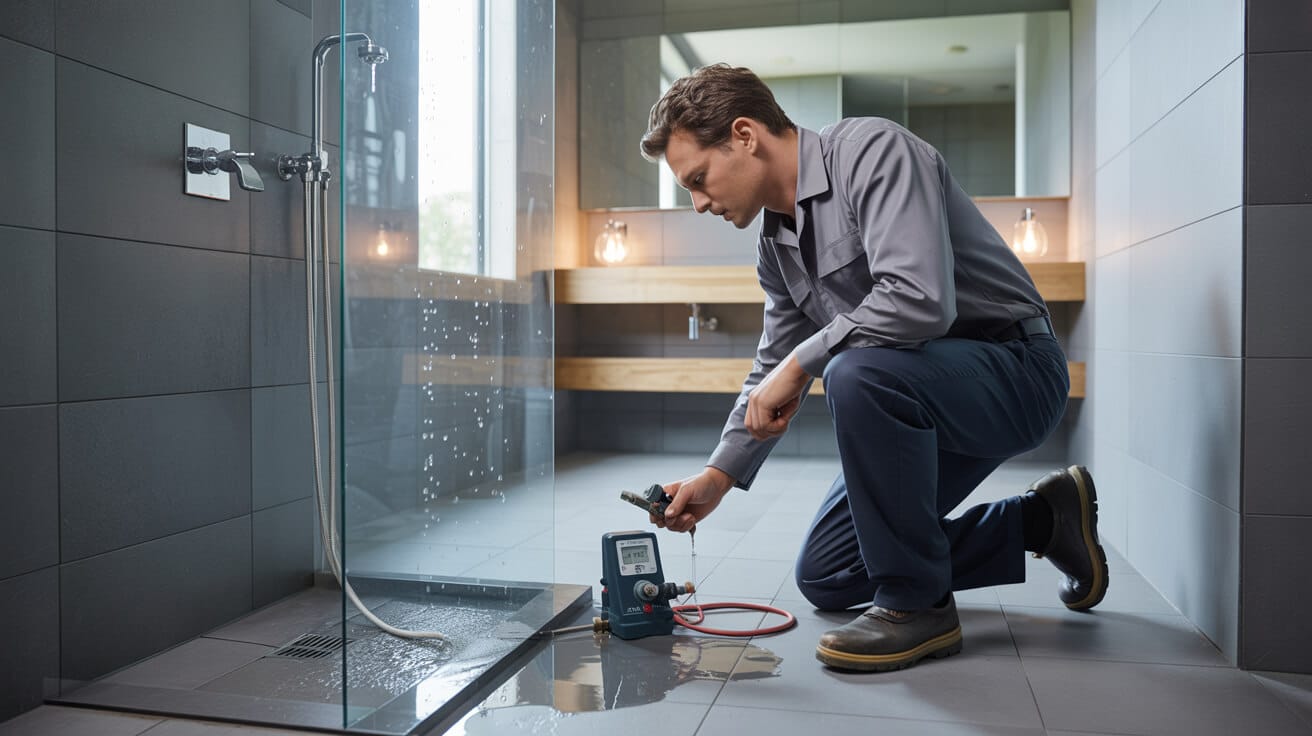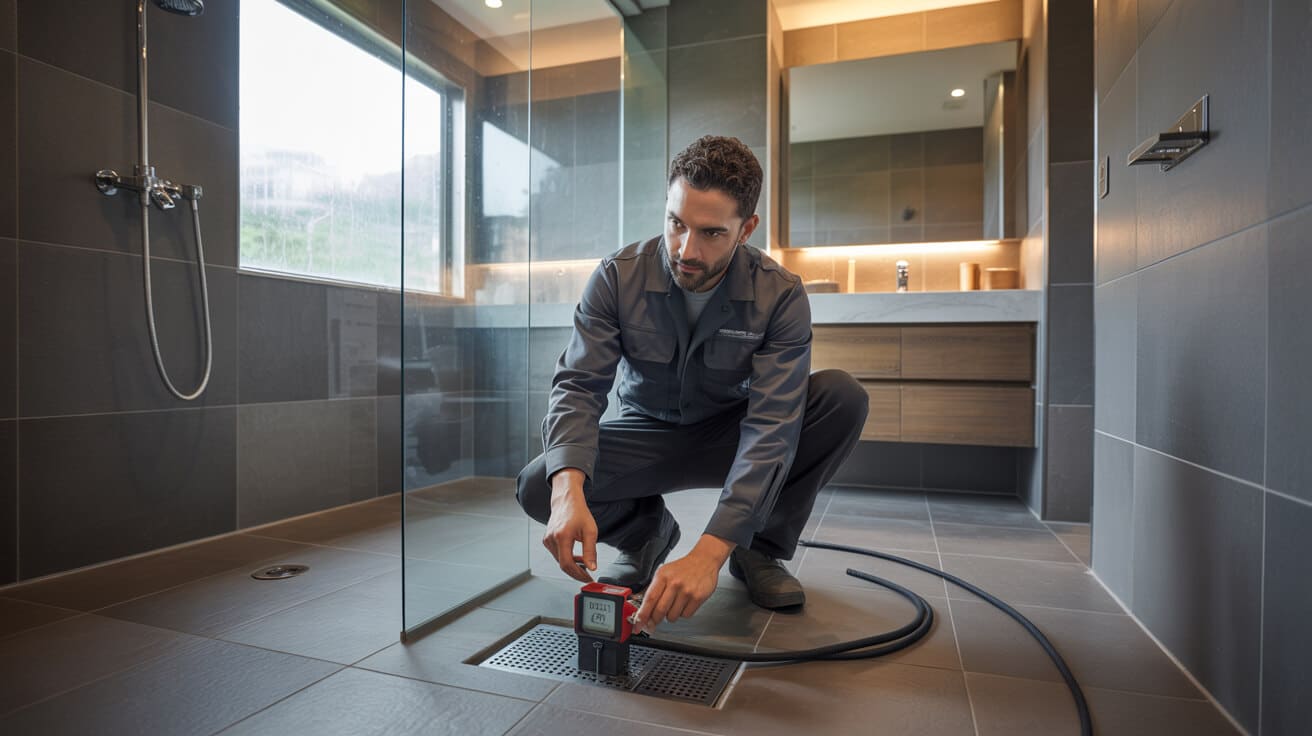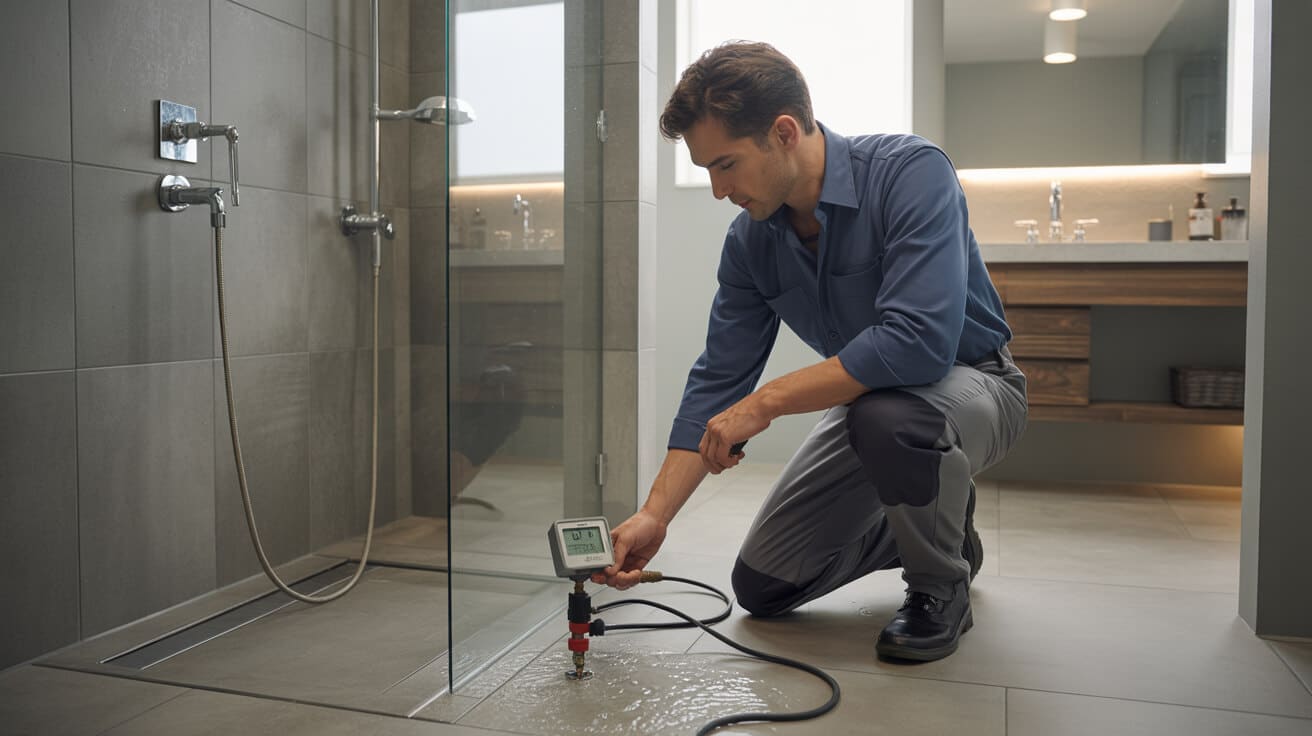Conducting leak detection with a water metre offers actionable insight into hidden plumbing failures and supply system health. It serves as a cornerstone in your ongoing property stewardship, enabling compelling benefits—from asset value protection to demonstrable compliance for managers, landlords, and organisations of any scale. Specialists such as Plumbers 4U provide both the expertise and standardised documentation that underpin property owner and business confidence, creating a continuity of care that shields your organisation from unforeseen water-related risks.
Etymology or name origin
The designation “water metre leak testing” is rooted in English-language technical documentation and service guidelines, describing structured diagnosis using calibrated flow-measurement devices. While the technique is globally recognised, alternative descriptors in North America and Europe include “flow verification,” “supply trace,” and “consumption anomaly inspection.” The underlying process has remained semantically stable across regulatory bodies, with standards bodies such as WRAS (Water Regulations Advisory Scheme) and WaterSafe codifying the phrase in guidance for plumbing maintenance and audit.
Overview / context
Water metering forms the analytical backbone of modern plumbing and heating system management. By design, water metres provide granular, real-time monitoring of supply and usage, enabling your company to detect and quantify abnormalities indicative of leakage. Leak testing initiatives intersect with several primary goals:
- Preventing gradual, undetected water loss that can erode foundations, encourage mould, and drive up costs;
- Ensuring property readiness for tenant changeover, compliance checks, or insurance requirements;
- Supporting broader water stewardship objectives by helping you meet efficiency benchmarks imposed by agencies and local authorities.
Background
Faults or failures in plumbing systems—including pipework, isolation valves, joints, fittings, or concealed appliances—may go undetected for extended periods. Metre-based leak detection provides an impartial, quantifiable window into subsurface or inaccessible lines, complementing visual inspection with numerical evidence.
Application domains
Water metre leak testing is deployed in diverse domains:
- Individual homes or rental units
- Apartment blocks and multi-occupancy buildings
- Offices, schools, hospitals, leisure centres
- Commercial and industrial estates, especially those under asset management or insurance surveillance
Testing regimens range from reactive (in response to specific complaints, e.g., unusually high bills) to scheduled programmes mandated by facilities maintenance protocols or legal frameworks.
History
Origins
Water consumption measurement dates to ancient cistern and aqueduct maintenance in Mesopotamia, Greece, and Rome, with calibrated stone vessels and rudimentary sluice gates functioning as primitive metres. Early plumbing codes referenced “accounting for flows” as a marker of infrastructure soundness and risk.
Industrial emergence
During the Victorian era, industrial water metres became standard in municipal supply networks, responding to urbanisation, public health demands, and legal mandates for water accountability. Leak diagnosis evolved from observation of swampy ground or drooping plasterwork to systematic metre checks—a major leap as iron, lead, and galvanised steel pipework proliferated in buried networks.
Contemporary evolution
The twentieth century introduced positive displacement and turbine metres, facilitating high-resolution readings by both residents and metre readers. With the emergence of plastic pipe systems and variable pressure boilers, new forms of leakage became more prevalent, requiring not just higher-precision metering but codified service procedures. Regulatory regimes, including the UK’s Water Supply (Water Fittings) Regulations 1999 and evolving WRAS standards, promoted universal adoption of leak testing as an element of professional plumbing care. Advancements in metrology—ranging from digital and smart metres to app-driven analytics—have expanded detection into predictive maintenance, changing your risk landscape and elevating client expectations.

Concept / description
Principles of operation
Water metre leak testing operates on the principle that flow measured at a system entry point should cease when all outlets and appliances within your property are fully closed. Any continued movement—however slight—on a properly installed, adequately sensitive metre indicates one of the following:
- An undetected leak downstream of the metre position;
- Metre bypass via faulty or tampered plumbing;
- Unintentional flow (e.g., running cistern, leaking service valve), which, if left unresolved, may signal a systemic vulnerability.
Core components
- Water metre: Mechanical or digital device, often installed at property boundary or nearest point-of-entry valve.
- Isolation valve (“stopcock”): Used to zone the plumbing system and confirm isolation; sometimes multiple are present in complex or multi-unit installations.
- Low-flow indicator: Mechanical or digital cue displayed on the metre; “telltale” or “spinner” which reveals even minute flows undetectable to the naked eye.
- Recordkeeping log: Documentation (physical or digital) detailing serial numbers, last readings, test results, and technician observations.
Example process
- Ensure all taps, valves, and water-using appliances are fully closed. For block buildings, coordinate with all residents on the supply.
- Read and record the metre, focusing on both total consumption digits and fine low-flow movements.
- Maintain your system in the “off” state for a set duration (usually 15–30 minutes).
- Re-examine the metre. Any change strongly suggests leakage; movement of the low-flow indicator, especially, is highly sensitive to micro-leaks.
- To pinpoint, repeat the isolation process in sub-zones or employ specialised diagnostic tools.
Limitations
Detection is subject to device sensitivity, the accuracy of prior system isolation, and infrastructure complexity. Slight leaks may escape notice on coarser metres; overlapping supply (e.g., looped plumbing) may mask symptoms, requiring a professional such as Plumbers 4U to deploy multiple test methods for certainty.
Functionality / purpose / applications
Routine management
Regular metre-based leak checks are invaluable for your company’s maintenance regime. Landlords often embed leak testing requirements within service contracts, particularly for compliance with local authority rules or property insurer mandates. Proactive discovery facilitates:
- Addressing tenancy disputes over water usage;
- Providing documentation for utility billing queries;
- Ensuring asset eligibility for grants, loans, or builder guarantees.
Urgent troubleshooting
Sudden drops in system pressure, continuous running of heating circuits, or unexplained water bill increases frequently trigger targeted metre leak tests. When conducted systematically, these tests allow your organisation to:
- Distinguish true system failures from transient or user-induced anomalies;
- Avoid unnecessary excavation or disruption when targeting leak repairs;
- Accelerate insurance claims by substantiating the presence, timing, and volume of unintended flow.
Applications table
| Application Domain | Typical Scenario | Stakeholder |
|---|---|---|
| Residential rental | Tenant reports high bill | Landlord/property mgr |
| Social housing | Routine audit | Housing association |
| Commercial/shop unit | Regulatory annual compliance | Facility manager |
| Public building | School/clinic, seasonal check | Local authority |
| Block of flats | Zone tracing, multi-occupancy review | Building supervisor |
Classifications / types / variants
Metre technology
- Mechanical metres: Relying on gears, impellers, and magnetic dials; ubiquitous in 20th-century infrastructure. Widely compatible and robust, but sometimes limited at lower flows.
- Digital and electronic metres: Employ sensors, solid-state electronics, and LCD readouts. With high sensitivity, built-in diagnostics, and remotely accessible logs, these are increasingly standard in new builds and portfolio upgrades.
- Compound and bulk metres: Used for multi-unit or industrial supply, featuring multiple measurement paths to preserve accuracy across variable flows.
- Sub-metres: Deployed for precise tracking (e.g., by tenant, unit, or process), supporting detailed consumption allocation and diagnostic granularity.
Testing protocols
- Visual isolation: All outlets shut, check for metre creep.
- Pressure drop analysis: Confirms leaks between metre and endpoint (more effective on unbranched runs).
- Flow anomaly detection: Data loggers identify deviations from baseline usage patterns.
- Advanced diagnostic overlays: Acoustic listening or thermal imaging equipment maps the location and volume, particularly where access is physically limited.
Practical decision factors
- Choose method according to property type, supply complexity, regulatory requirements, and available instrumentation.
- For guarantee or legal documentation, always employ a qualified engineer; DIY methods are appropriate only for low-stakes, preliminary investigation.
Systems / tools / methodologies
Standard diagnostics
A basic leak test requires:
- A compatible metre (calibrated and read by your trained personnel);
- A functioning isolation or main shut-off valve;
- Access for reading the low-flow indicator or digital display.
Professional instrumentation
Service companies such as Plumbers 4U use:
- Metre keys or tamper-proof tools for valve box access;
- Pressure and temperature gauges for contextual analysis;
- Chemical dye tab tests for suspect appliances or sub-circuit tracing;
- Digital data loggers and handheld diagnostic devices, which can store, analyse, and present consumption profiles over time;
- Acoustic or thermal imaging systems for non-invasive pinpointing.
Methods comparison table
| Method | Sensitivity | Use Case | Typical Tool |
|---|---|---|---|
| Visual/Isolation | Moderate | General, routine | Metre + log |
| Pressure Drop | High | Pipe runs | Gauge |
| Acoustic listening | Very high | Buried/concealed | Listening device |
| Thermal imaging | High | Hot water/cold spots | IR camera |
| Flow anomaly detection | Very high | Commercial/remote | Data logger |
SOP vs. DIY
Standard operating procedures outlined by water authorities and insurers favour documentation, scheduled checklists, uniform toolkits, and multi-operator sign-off. In contrast, DIY techniques are informal, generally less reliable, and mostly not accepted as evidence in disputes or insurance claims.

Stakeholders / entities involved
Homeowners and tenants
Tenants are the first to notice symptoms—damp, mould, high bills. Homeowners control internal system checks and initiate professional engagement. For multi-unit dwellings, building managers coordinate access.
Landlords and property managers
Landlords hold duty-of-care obligations to promptly resolve leakage, schedule testing, and keep official records. Your property manager may act as agent, especially where leases or block management agreements impose explicit protocols.
Commercial and facility managers
Commercial operators are driven by financial risk, compliance with hygiene and safety standards, and the avoidance of business interruption.
Service providers (Plumbers 4U)
Professional water metre leak testing is executed by certified tradespersons, following protocols and providing structured reporting. Our services include scheduling, testing, diagnosis, repair oversight, and evidentiary documentation for your compliance and insurance needs. The company’s WRAS and regulatory alignment streamlines process, minimises liability, and supports organisational accreditation or audit.
Water suppliers and auditors
Water companies may initiate tests after metre replacement, supply complaints, or in connection with area-wide loss-prevention campaigns. External auditors assess protocol integrity, equipment calibration, and reporting in regulated environments.
Legal / regulatory / ethical considerations
Regulatory landscape
Leaks must be managed in accordance with:
- Water Supply (Water Fittings) Regulations 1999 (UK): Imposes requirements for proper installation, annual system monitoring, and prompt rectification of leaks.
- Building Regulations (Part G/H): Sets consistent standards for water supply efficiency, waste management, and system safety.
- WRAS and WaterSafe: Set technical and procedural standards, including metre selection, approved products, and proper certification.
Documentation
You are expected to provide signed and dated test reports, clearly linking findings to system areas, recommended follow-up, and confirmation of repairs. Insurance companies, property buyers, and local authorities may require formal evidence, affecting premiums and liability.
Insurance and contracts
Many insurance policies, leases, and commercial contracts require demonstration of regular leak testing and active loss management. Failure to comply may affect claims, leave you vulnerable to regulatory action, or void guarantees.
Ethical stewardship
Transparent notification of tenants, prompt repair of findings, and environmentally responsible water use practices form the ethical backbone of leak testing. Service firms reinforce your professional trust and public responsibility while advancing sustainability goals.
Performance metrics / data / measurements
Leak quantification and reporting
- Minimum detectable flow: Many mechanical metres resolve down to ~0.05 litres/min; digital versions may go lower.
- Total daily/weekly loss: Calculated by comparing periods of stasis to known use baselines; loss above statistical normal indicates a leak.
- Cost escalation modelling: By mapping loss rates to current water tariffs, your company can project potential bill increases, supporting your decision-making for maintenance investment.
Accuracy and limitations
Accuracy is conditioned by:
- Metre age, model, and calibration;
- Location of measurement;
- Environmental factors (temperature, vibration, pipework material);
- Completeness of system isolation.
Sample data table
| Parameter | Typical Range | Key Factors |
|---|---|---|
| Minimum detectable leak | 0.05–0.1 l/min (mech) | Metre type, calibration |
| Max. error (aged metre) | ±5–10% | Water quality, wear |
| False positive triggers | Backflow, expansion | Valve design, concurrent use |
| Time to test | 15–60 min | System size, accessibility |
Challenges / barriers / limitations
Operational
- Difficult access (buried/nearly inaccessible metres, busy sites).
- Multi-occupant compliance management (requirement for coordination, communication).
- Periodic disruption (water shutoff during testing may impact operations).
Technical
- Sensitivity: Standard metres may not detect ultra-slow or intermittent leaks.
- System complexity: Parallel plumbing, alternative feeds, and historic fixes can mask or complicate detection.
Social and economic
- Reluctance due to perceived cost or inconvenience.
- Confusion over responsibility between landlord, agent, and tenant.
- Disputes arising from ambiguous or conflicting test outcomes.
Cultural
- Stigma around “wasting water” can prompt avoidance of professional consultation until damage is obvious.
- Tenant anxiety over service disruption; asset owner fears about negative audit findings.
Impact / influence / legacy
Environmental and utility impacts
- Effective leak testing saves significant volumes of water, directly supporting conservation targets and reducing pressure on municipal supply systems.
- Early detection preempts larger failures, reducing insurance payouts and unbudgeted repair costs.
- Bill transparency and validation reduce tenant/owner disputes and improve trust in building management.
Professional and regulatory influence
- Routine leak testing is now the professional standard for all managed property classes in the UK and across advanced regulatory systems.
- Insurance claim data emphasise the outsized returns on modest investments in structured leak detection; regulatory penalties further reinforce your incentive.
- Maintenance logs from services like those provided by Plumbers 4U support asset resale, portfolio management, and organisational risk mitigation.
Future directions, cultural relevance, and design discourse
Technological innovation
The next decade will see increased deployment of ultra-high-sensitivity electronic metres, with capacities for continuous self-reporting and anomaly detection. Companies such as Plumbers 4U are already integrating these into maintenance platforms, amplifying your confidence and simplifying compliance.
Regulatory momentum
Policymakers are trending toward tighter mandates, requiring property portfolios to maintain audit trails and report water loss. Government-backed certificates for leak-free status may influence property value or rental eligibility.
Societal and cultural shift
Water stewardship is becoming a source of organisational and community pride. Tenants, boards, and clients now expect proactive detection, swift repair, transparent reporting, and environmental alignment—a trend only likely to deepen as sustainability and utility pressure mounts.
Design and architecture
Commitment to leak detection is now being built into new property designs, with metering and diagnostic access points up front in construction plans. Future regulatory and industry guidance will likely further enumerate these requirements, shaping best practice from drawing board to daily management.

